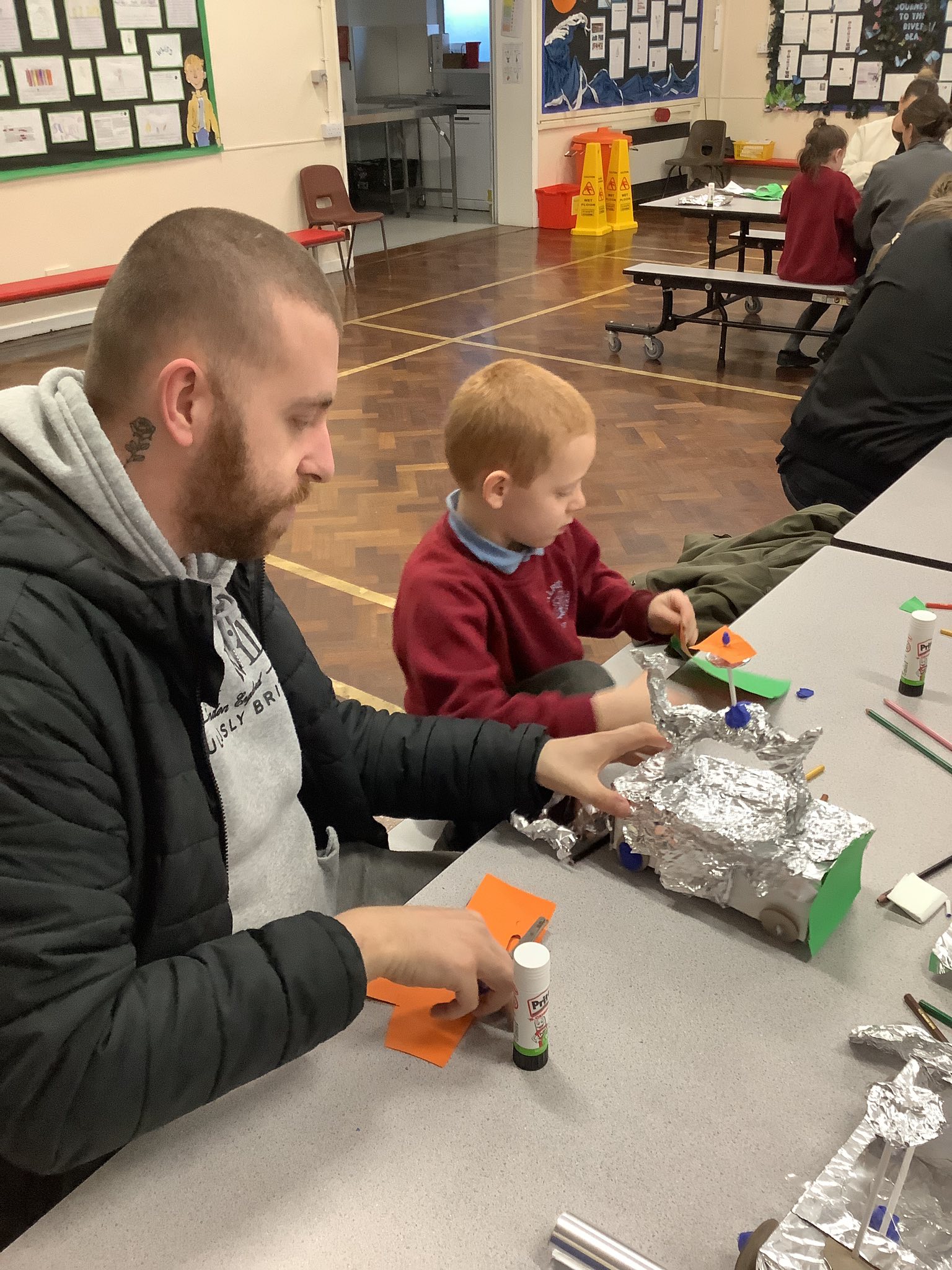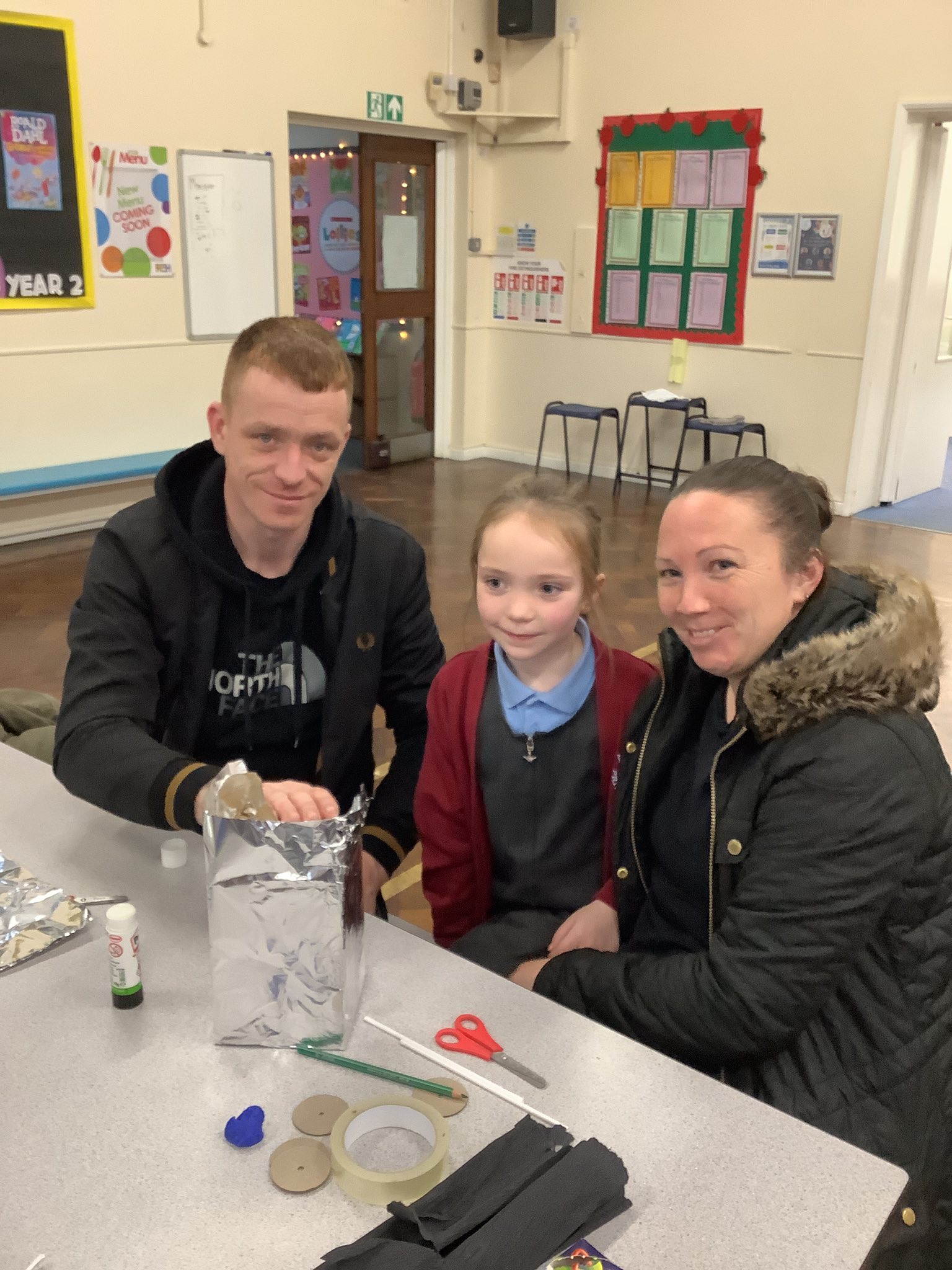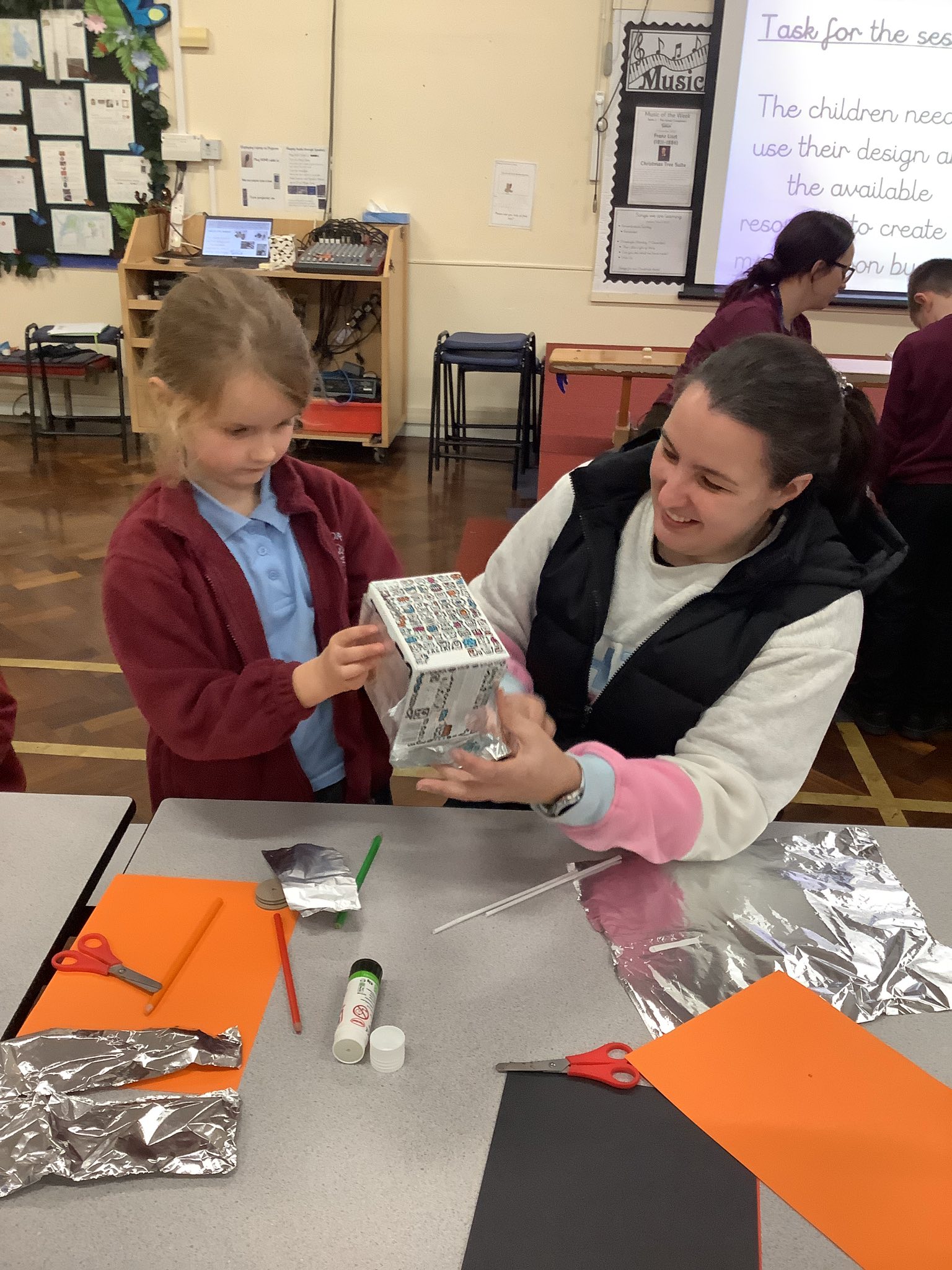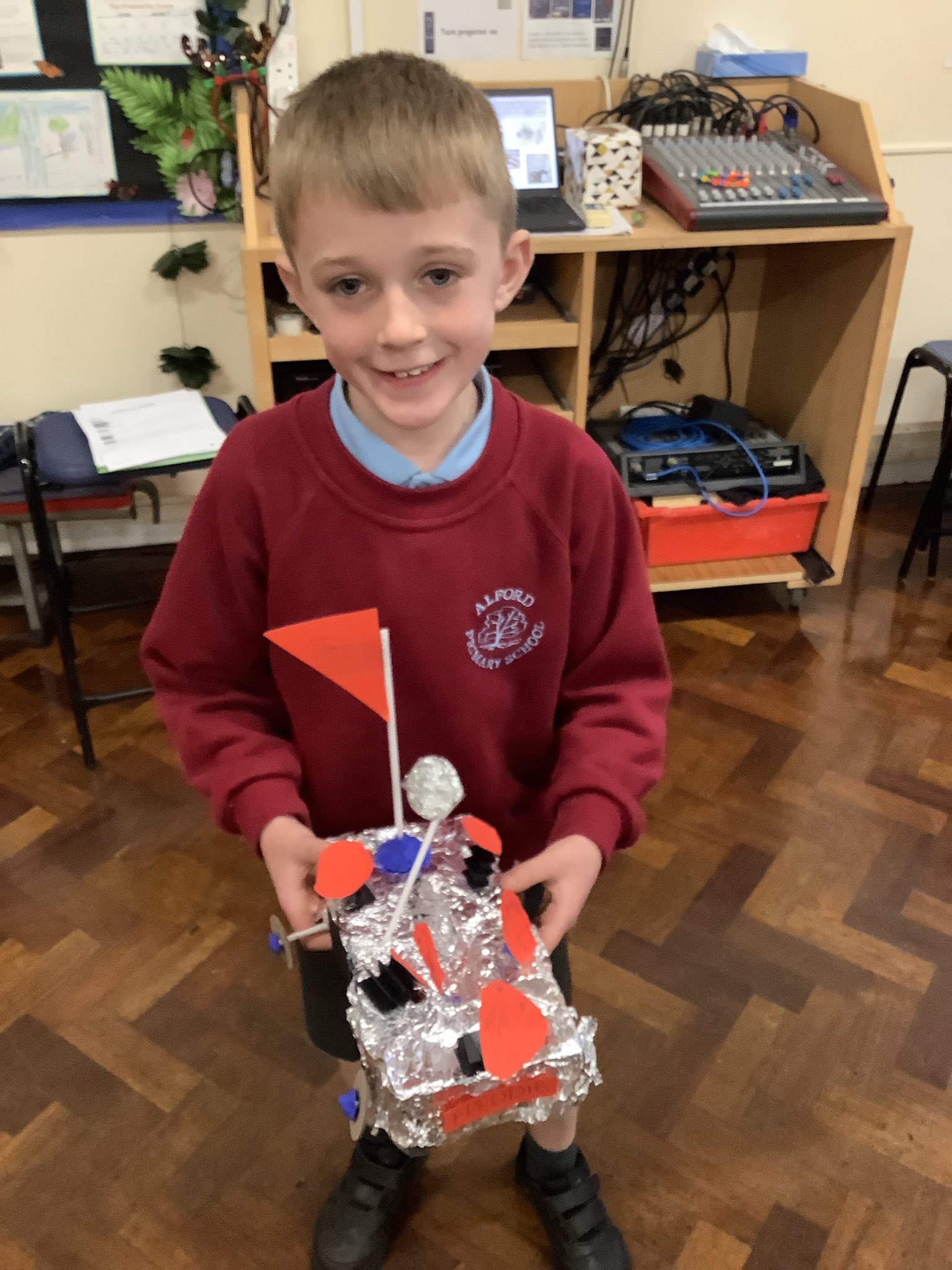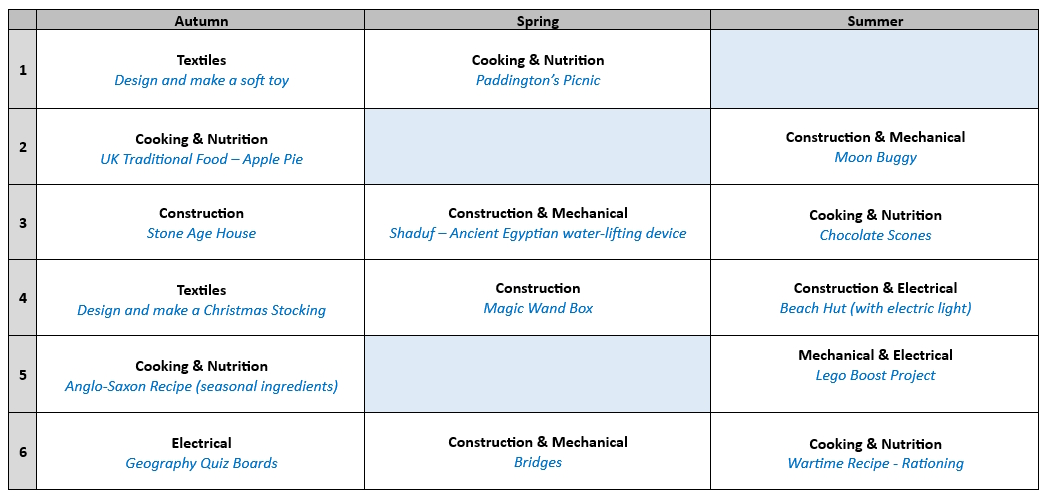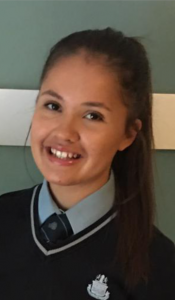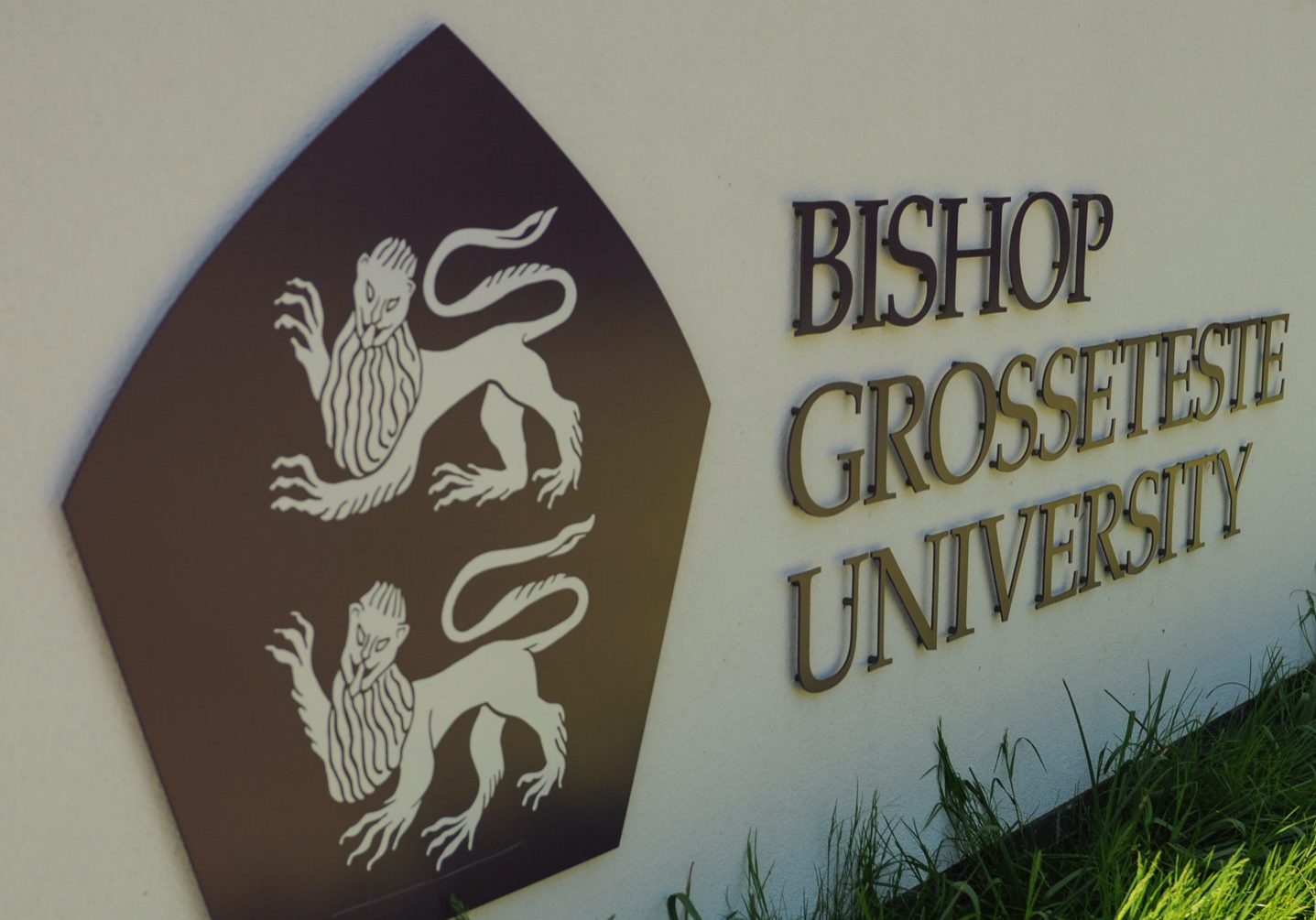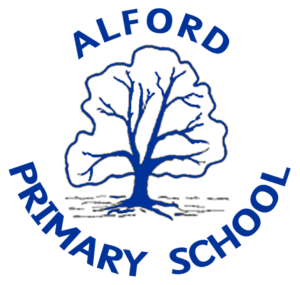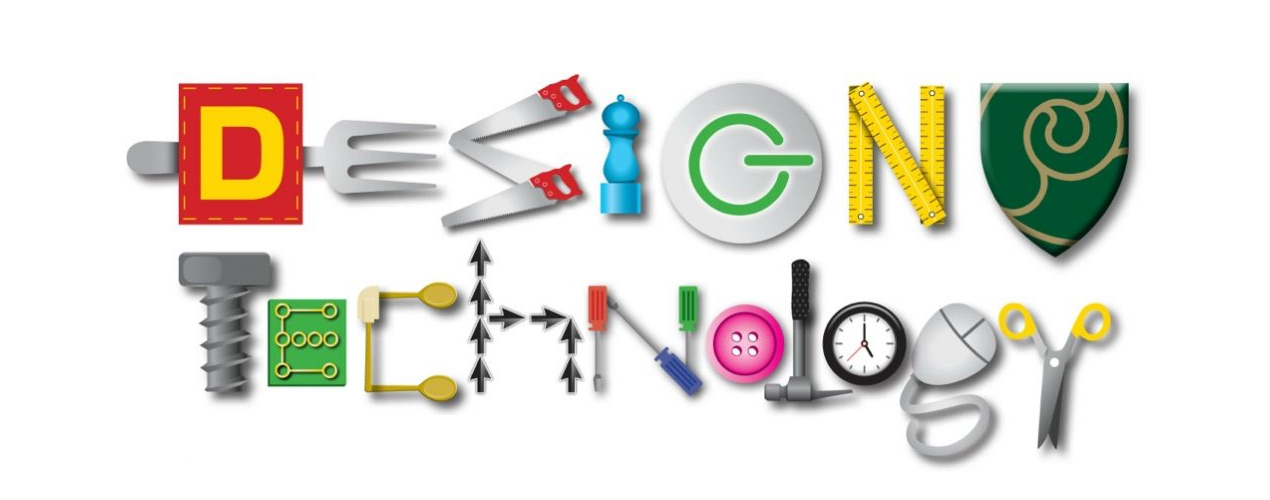
What the National Curriculum requires in Design and Technology (including Cooking & Nutrition) at KS1:
Design
- Design purposeful, functional, appealing products for themselves and other users based on design criteria
- Generate, develop, model and communicate their ideas through talking, drawing, templates, mock-ups and, where appropriate, information and communication technology
Make
- Select from and use a range of tools and equipment to perform practical tasks [for example, cutting, shaping, joining and finishing]
- Select from and use a wide range of materials and components, including construction materials, textiles and ingredients, according to their characteristics
Evaluate
- Explore and evaluate a range of existing products
- Evaluate their ideas and products against design criteria
Technical knowledge
- Build structures, exploring how they can be made stronger, stiffer and more stable
- Explore and use mechanisms [for example, levers, sliders, wheels and axles], in their products.
Cooking and Nutrition
- Use the basic principles of a healthy and varied diet to prepare dishes
- Understand where food comes from.
What the National Curriculum requires in Design and Technology (including Cooking & Nutrition) at KS2:
Design
- Use research and develop design criteria to inform the design of innovative, functional, appealing products that are fit for purpose, aimed at particular individuals or groups
- Generate, develop, model and communicate their ideas through discussion, annotated sketches, cross-sectional and exploded diagrams, prototypes, pattern pieces and computer-aided design
Make
- Select from and use a wider range of tools and equipment to perform practical tasks [for example, cutting, shaping, joining and finishing], accurately
- Select from and use a wider range of materials and components, including construction materials, textiles and ingredients, according to their functional properties and aesthetic qualities
Evaluate
- Investigate and analyse a range of existing products
- Evaluate their ideas and products against their own design criteria and consider the views of others to improve their work
- Understand how key events and individuals in design and technology have helped shape the world
Technical knowledge
- Apply their understanding of how to strengthen, stiffen and reinforce more complex structures
- Understand and use mechanical systems in their products [for example, gears, pulleys, cams, levers and linkages]
- Understand and use electrical systems in their products [for example, series circuits incorporating switches, bulbs, buzzers and motors]
Cooking and Nutrition
- Understand and apply the principles of a healthy and varied diet
- Prepare and cook a variety of predominantly savoury dishes using a range of cooking techniques
- Understand seasonality, and know where and how a variety of ingredients are grown, reared, caught and processed.
EYFS: The EYFS framework is structured very differently to the National Curriculum as it is organised across seven areas of learning rather than specific subject areas. Our EYFS Curriculum has been designed to meet the requirements of the educational programmes in the EYFS Statutory Framework (2021). This is outlined in our unique Curriculum Overview (see Long Term Plan). The Development Matters (2020) guidance offers a top-view of how children develop and learn. The table below sets out the DT developmental pathways in broad ages and stages - Three and Four Year Olds, Reception and Early Learning Goals. These pathways have been selected as a ‘best-fit’ match to the programme of study for DT, and are key building blocks for children as they transfer their learning to the National Curriculum. The most relevant pathways for DT are taken from the following areas of learning – Physical Development and Expressive Arts and Design.
Intent
Whole School Overview of DT Units






Year 5 enjoying cooking at Anglo Saxon recipe - Medieval Pottage Stew.
They used their peeling, chopping, measuring and cutting skills to create their Pottage.
It was delicious!
Year 2 having lots of fun making Moon Buggies!
They invited their grown-ups in to make Moon Buggies with them after designing them in class. Well done Year 2
they are just brilliant!
